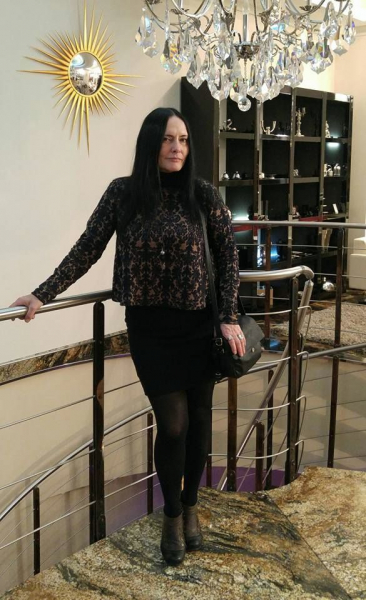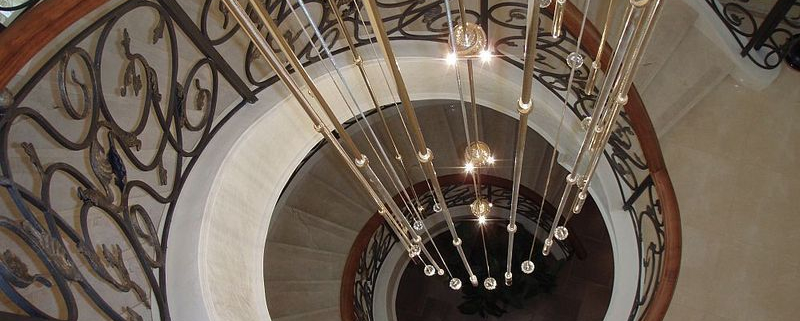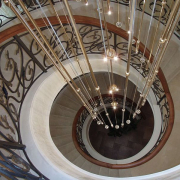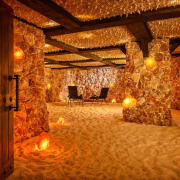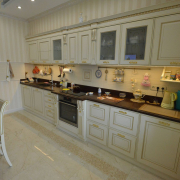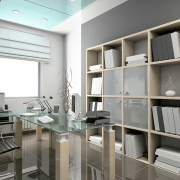Light in the interior
When planning residential lighting systems, it should be assumed that the light should be convenient, appropriate and meet the goals of the room. At the same time, do not forget about its purely decorative possibilities, thanks to which the same space may seem, for example, warmer or colder in scale, more aggressive or calmer in spirit, larger or smaller in area.
LIGHT AND COLOR
Without light, there is no color. Thanks to the light, the entire color palette of the environment is revealed to the eye. At the same time, in different light, the same tone is perceived differently _ it becomes warmer or colder, darker or lighter. The biggest contrast in the perception of color is noticeable in natural and artificial lighting. At the same time, natural light is constantly changing and is completely different, at least 4 times a day: at dawn, at noon, in the afternoon and in the evening. And, for example, to give a room on the dark north side a feeling of warmth, it is recommended to use warm and light tones when creating the interior. And for rooms rich in sunlight, cold bluish-green tones are more suitable.
There is also a difference in color perception when lighting the room with various artificial light sources. And not only the nature of the interior, but even the complexion of the people in it depends on what the lighting of the room will be. So, an incandescent lamp increases the sharpness of color and the brightness of warm tones. This light source emits light of warm shades, emphasizing the red-brown and yellow tones of the surrounding objects. Cold tones in the light of an incandescent lamp look ugly. A halogen lamp has about the same effect on colors. Fluorescent light sources emit cold light by absorbing or changing the surrounding color.
The intensity and depth of color in natural and artificial lighting is also affected by the degree of gloss of the paint. For example, the higher the degree of gloss, the stronger the reflection of light, and the brighter the color appears.
The general nature of the light comfort of the room is also affected by the color of the main interior surfaces, which have their own reflection coefficient.
So, with white wall cladding, the reflection coefficient is 0.7-0.85, and with green or blue – 0.02. Therefore, it is possible to place lamps of lower power in bright rooms than in dark ones.
Therefore, when choosing the right shade for finishing the surfaces of the premises, be sure to take into account the future lighting of the room. To get an objective picture, when choosing, you can consider the tone in the appropriate lighting: by the light of a lamp in the store, in daylight, or, if possible, take a tone sample home to check.
ABOUT THE “GENERAL” AND “LOCAL” LIGHT
Today, two types of artificial lighting – general and local – are increasingly used to solve the light problem of the dwelling.
The task of general lighting is to “fill” the room with a smooth, soft light. Such light should not interfere, but, on the contrary, create a sense of comfort. General lighting can be organized by reflected or diffused light sources. In the first case, this task can be solved by lamps hidden, for example, in a niche of a multi-level ceiling. In the second, chandeliers and lamps that are located on the same level will cope with the task.
Local (accent) lighting – spot – serves to attract attention to a particular area of the room. The arsenal of modern lighting technology provides all the functionality of light in the interior. For example, with the help of diffused light, which evenly illuminates all pieces of furniture and equipment, it is possible to tone the planes and create original lighting effects. For the device of such a light, a drywall plate is attached to the ceiling on special brackets. Through holes are cut in the plate, into which halogen lamps are mounted. Their number depends on the area of the room.
Interesting lighting effects are also achieved with the help of a stretch ceiling design, in which the room is covered with a starry sky with an abundance of twinkling stars-light bulbs. They visually enlarge the space.
By means of a point light, details and elements can be developed.
And the counter-light will create a direct and reverse aerial perspective, a game of silhouettes, and with its help you can create a feeling of “floating” space, an unreal metamorphosis of long-familiar objects.
EACH LAMP HAS ITS OWN ROOM
The recent statement that chandeliers are a thing of the past is not entirely accurate. It’s just that different lighting schemes are needed for rooms that are different in their functionality. For example, in a large room with high ceilings, the interior of which is made in a classic style, a huge crystal chandelier in the center of the ceiling will be quite appropriate, and in another, not so pompous room, it will be more rational and convenient to simply light up individual functional areas.
With the right choice of lighting system, you can visually adjust the proportions of the room. For example, the longitudinal lighting of one of the walls visually increases the short room, and the brightly lit ceiling seems to be higher. To reduce the height of the ceiling, use wall lighting with ceiling lamps aimed at the walls. Lighting the wall at the end of the corridor will make it wider. The wall with windows should be decorated in bright colors so that the wall does not contrast with the window. And the study or bedrooms can have not only general lighting, but also local illumination. Moreover, sometimes a table lamp, sconce or ceiling lamp is enough, which, having illuminated the necessary object, leave the surrounding space in semi-darkness.
Diffused light is preferred in the bedroom. Its effect is achieved by maximum protection of sources with hoods, lampshades and lampshades made of frosted glass or fabric. An unusual light effect is produced by large lampshades covered with multicolored fabric. Also in the bedroom, a calm light range, milky-white matte lamps are preferred. The lightest room in the apartment is best suited for a children’s room, and the more natural light, the better. The choice of lamps and light sources largely depends on the age of the child.
If the owner of the room is a schoolboy, you should definitely take care of good lighting of his desk. And if he also likes to read before going to bed, you should arrange a lighting device at the head of the bed. As for the design, then, for example, by placing lamps on the wall or ceiling of the nursery, you can create a picturesque drawing from light sources that will complement the decorative decoration of the room. Very seriously you need to take the choice of lamps for the children’s room. Studies have shown that daylight lamps have a negative effect on children. Increased fatigue, irritability, absent-mindedness, vision problems are the result of many hours of classes under the light of such lamps.
This occurs as a result of the shift of radiation to the yellow and red parts of the spectrum. The modern approach to lighting in the children’s room involves the use of bright, but not blinding halogen lamps that transmit radiation from the entire solar spectrum. The organization of artificial lighting in the kitchen deserves special attention. Lamps located under the lower plane of kitchen cabinets are quite appropriate here. They should be placed so that the light stream falls on the working plane of the table. The lamps themselves can be covered with closed lampshades.
The light in the dining room is designed to create a calm, relaxed atmosphere and the best “serving” table setting. Therefore, the location and type of lamps in this room should correspond to their main function — the formation of a comfortable light spot on the surface of the countertop. It is noteworthy that the general light, as such, in the dining room can be completely neglected. If in other rooms such lighting is the main one, then in the dining room the main light is local, focused on the countertop. A spot of light above the table is a necessary and often sufficient condition for favorable lighting of the dining room.
LIGHT AND EMOTIONS
Psychologists have proven that lighting has a strong influence on the formation of mood. Often everyone has heard that the room is “filled with air” or “it brings a dreamy mood”, or “it blows cold”. However, in order to form one or another image of the room, many components merge together – architecture, decorative elements and much more. But the light does not take the last place. Different light sources in interior design are associated with different emotions. For example, a candle in a candlestick immediately creates an atmosphere of solemnity and a certain intimacy. Suspended light sources in the dining room and living room produce a very strong emotional effect. The bedroom is also a protected area of night lights, floor lamps and sconces.
An important element of mood creation is the characteristic of the spectrum emitted by the lamp. The higher the incandescent temperature and the greater the blue color in the spectrum, the clearer the perception of objects is fixed by the eye. But low-temperature lamps give the interior a vague, mysterious mood.
